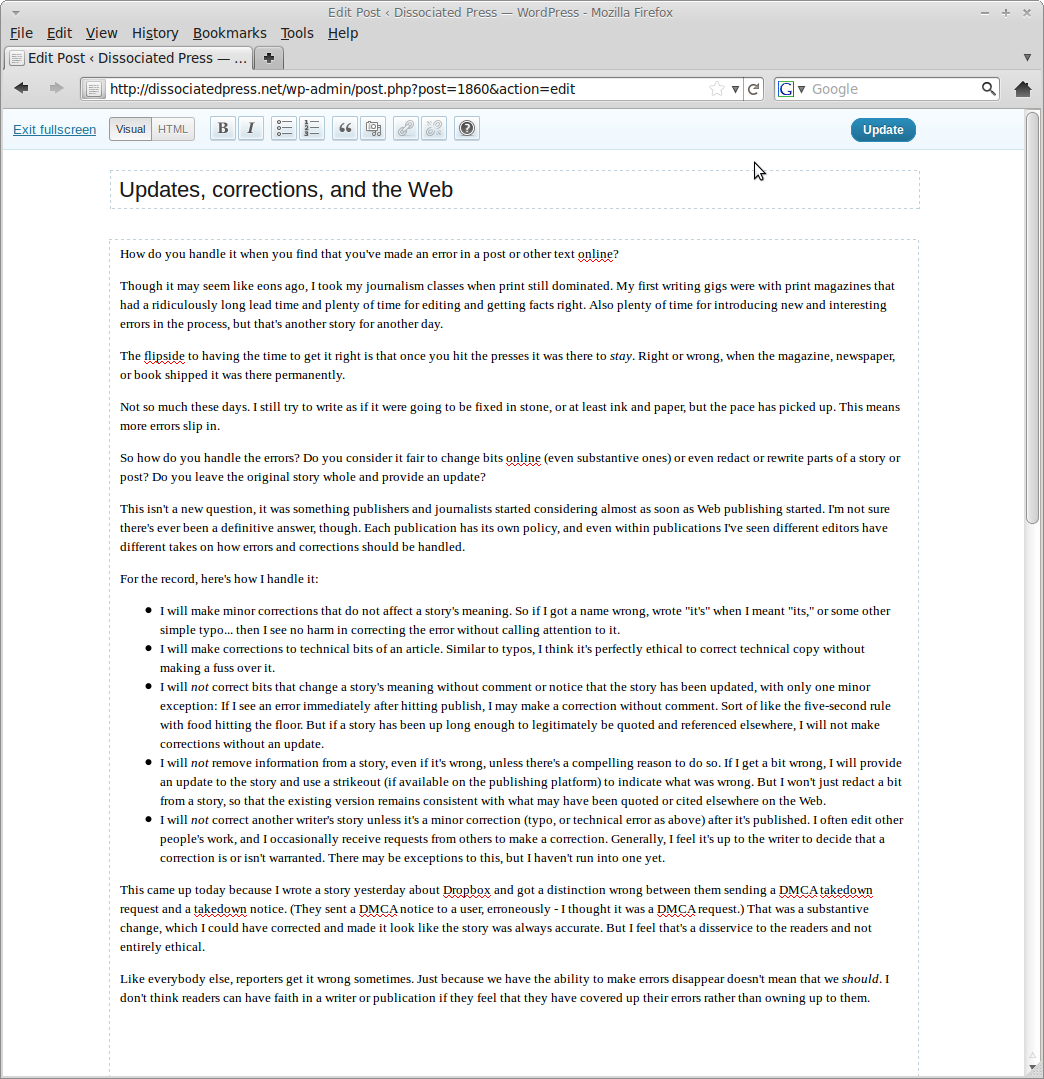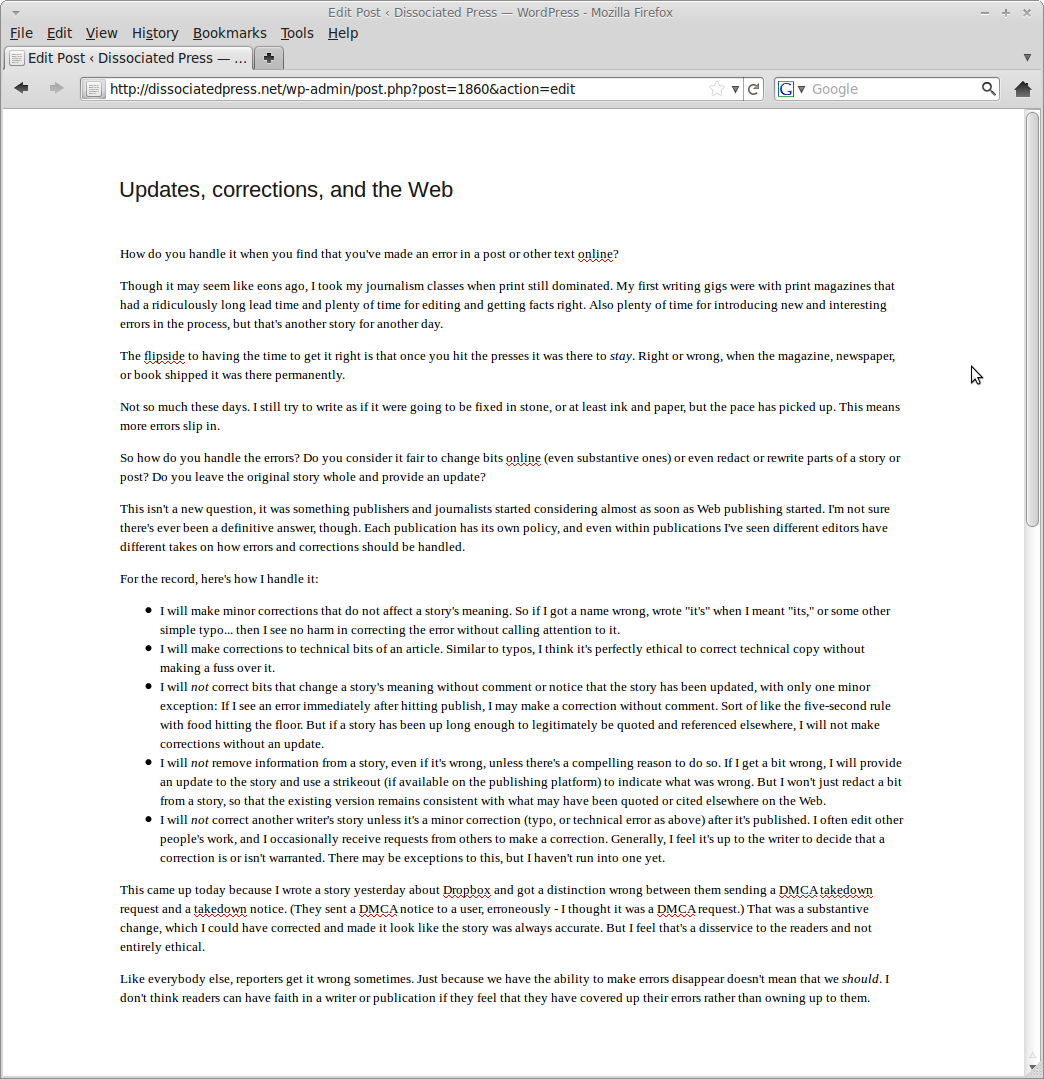While many of us were barbecuing and blowing things up, the WordPress folks were putting the finishing touches on WordPress 3.2. On July 4, the “faster and lighter,” WordPress 3.2 was released with some features well worth checking out.
If you’re not familiar with WordPress, it’s a GPL’ed project that has become one of the most popular personal publishing and CMS platforms on the Web. If you want to run a blog or many types of Web sites, it’s a go-to tool for rapid deployment and easy management. WordPress 3.2 follows WordPress 3.1 by only four months, a result of the project working on faster development cycles with fewer features per cycle. Seems to be a lot of that going around, and that’s a good thing.
The release, codenamed “Gershwin” after composer and pianist George Gershwin, is notable for admin feature updates, a new theme, and more. By the way — if you’re not up on the music of Gershwin, do yourself a favor and check him out while you’re reading.
New and Nifty
 If you do your composing in WordPress, then you might like the new “fullscreen” mode in the WordPress editor. Though it’s touted heavily in the release notes, it’s not entirely obvious how to enable the mode. In Figure 1 you’ll see the toolbar, with the fullscreen button highlighted. Just click that, and you’ll get a screen like Figure 2 and Figure 3.
If you do your composing in WordPress, then you might like the new “fullscreen” mode in the WordPress editor. Though it’s touted heavily in the release notes, it’s not entirely obvious how to enable the mode. In Figure 1 you’ll see the toolbar, with the fullscreen button highlighted. Just click that, and you’ll get a screen like Figure 2 and Figure 3.
As you can see, the WordPress editor really gets out of the way. (Note, I think this is a nifty feature — but I also recommend writing posts in another editor and pasting into WordPress. As stable as WordPress and today’s browsers are, you can never be too careful…)
The admin screen has been redesigned and it’s looking mighty nifty and is also a bit faster. The new look is much, much more pleasing to the eye. You’ll notice a lot of little changes — the Posts menu now has “all posts” instead of “posts” which makes more sense, for example. But if you’ve been using WordPress prior to 3.2, the admin UI update isn’t going to hinder your ability to get things done.
The 3.2 release also ships with a new stock theme, Twenty Eleven. It takes advantage of all of the WordPress theme features like widgets, post thumbnails, custom headers, etc. It also allows you to rotate or have “random” headers, so visitors won’t see the same boring image every single time they visit your page.
It also allows you to choose between a Light and Dark theme, and whether content is on the right, left, or has no sidebar at all. One thing I would like, though, is the ability to widen the content area if there’s no sidebar. Currently it looks very lonely sitting there in the middle with so much space on each side. It’s not a problem when viewing on small screens, but if you’re viewing in a browser that’s wider than 1,000 pixels, it looks very lonely.
The Admin Bar — the gray bar at the top of WordPress when you’re logged in — has also had a lot added to it. So if you’re browsing your site and want to add a post, go to the Dashboard, change your theme, modify the background, or create a shortlink using the WordPress.com “wp.me” URL, it’s a piece of cake. All of those functions are immediately available from the Admin Bar.
Mostly, WordPress 3.2 is rounded out by tons of minor changes — like the “bubble” styling for comments, or fixing the PressThis bookmarklet for WebKit browsers.
Out With the Old…
WordPress 3.2 isn’t all about new features — it’s also about getting rid of cruft and moving on to bigger and better things. (Or at least newer things.)
First off, the 3.2 release updates two dependencies for WordPress that haven’t changed for quite a while. Specifically, WordPress now requires MySQL 5.0.15 and PHP 5.2.4 (or, of course, later versions).
The PHP requirement will no doubt make many other folks very happy. Why? Because the PHP community has wanted to get rid of PHP 4 for quite some time. However, adoption of PHP 5 happened very slowly and there was a lot of demand to keep it around. Today, though, very few hosting companies lack support for PHP 5 — and if they do, it’s time to consider moving. All of the supported Linux distros I’m aware of also support PHP 5 with the exception of Red Hat Enterprise Linux (RHEL) 4.x.
Unless you’re still running WordPress on an old version of RHEL, though, you should be able to upgrade with impunity.
The WordPress folks have also dropped support for Internet Explorer 6, finally. They’re also getting ready to phase out IE7, and WordPress will display a “browse happy” logo to users who are viewing WordPress in an out of date browser.
Why Wait?
If you’re running WordPress, there’s no time like the present to update. The WordPress Updates feature makes it a one-click process (not counting the backup, of course). Prior to the 3.2 release, I’d run the betas and release candidates using the WordPress Beta Tester plugin, and I’ve had no problems at all.
Not quite sure if you’re ready to switch? One way to test out WordPress 3.2 with almost no hassle is to download one of BitNami’s WordPress 3.2 stacks or virtual machines. They have quite a few options, so you can download a stack or VM, export your current WordPress data and have a field day testing it out.
If you haven’t tried WordPress yet, now’s a good time to jump on the bandwagon. It’s dead easy to set up and maintain, and the price certainly is right!





